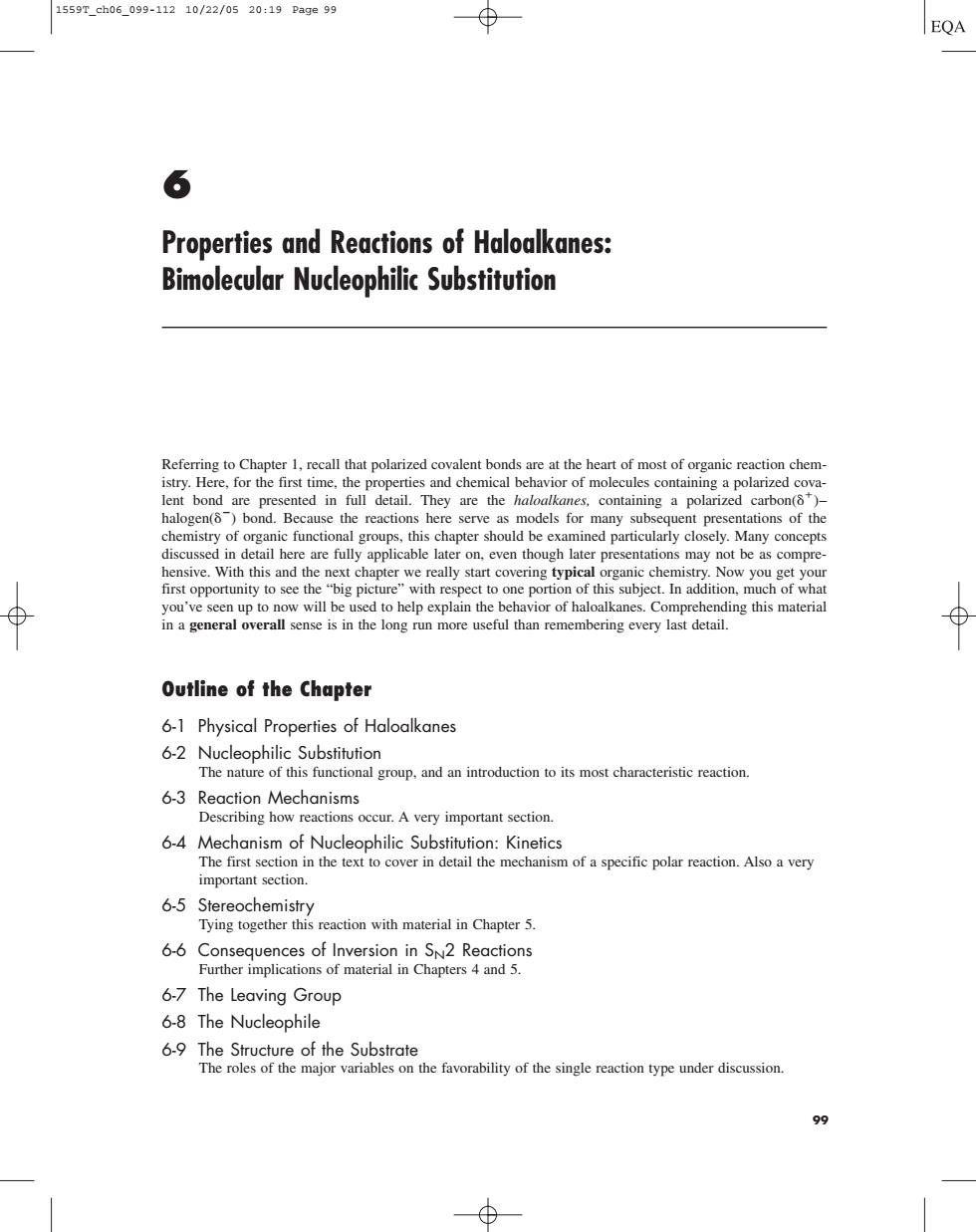正在加载图片...

15597ch06_099-11210/22/0520:19Page99 EQA 6 Properties and Reactions of Haloalkanes: Bimolecular Nucleophilic Substitution halogen(o caus her serve ent pres onsof the discussed in detail here are fully applicable later on.even though later presentations may not be as compre in a general overall sense is in the long run more useful than remembering every last detail. Outline of the Chapter 6-1 Physical Properties of Haloalkanes 6-2 Nucleophilic Substitution The nature of this functional group.and an introduction to its most characteristic reaction. 64MathansncftephieshesiaKnerc tto cover in detail the mechanism of a specific polar reaction.Alsoa very 6-5 Stereochemistry ying together t reaction with material in Chapter5. 6-6 Consequences of Inversion in SN2 Reactions Further implications of material in Chapters 4 and 5. 6-7 The Leaving Group 6-8 The Nucleophile 996 Properties and Reactions of Haloalkanes: Bimolecular Nucleophilic Substitution Referring to Chapter 1, recall that polarized covalent bonds are at the heart of most of organic reaction chemistry. Here, for the first time, the properties and chemical behavior of molecules containing a polarized covalent bond are presented in full detail. They are the haloalkanes, containing a polarized carbon()– halogen() bond. Because the reactions here serve as models for many subsequent presentations of the chemistry of organic functional groups, this chapter should be examined particularly closely. Many concepts discussed in detail here are fully applicable later on, even though later presentations may not be as comprehensive. With this and the next chapter we really start covering typical organic chemistry. Now you get your first opportunity to see the “big picture” with respect to one portion of this subject. In addition, much of what you’ve seen up to now will be used to help explain the behavior of haloalkanes. Comprehending this material in a general overall sense is in the long run more useful than remembering every last detail. Outline of the Chapter 6-1 Physical Properties of Haloalkanes 6-2 Nucleophilic Substitution The nature of this functional group, and an introduction to its most characteristic reaction. 6-3 Reaction Mechanisms Describing how reactions occur. A very important section. 6-4 Mechanism of Nucleophilic Substitution: Kinetics The first section in the text to cover in detail the mechanism of a specific polar reaction. Also a very important section. 6-5 Stereochemistry Tying together this reaction with material in Chapter 5. 6-6 Consequences of Inversion in SN2 Reactions Further implications of material in Chapters 4 and 5. 6-7 The Leaving Group 6-8 The Nucleophile 6-9 The Structure of the Substrate The roles of the major variables on the favorability of the single reaction type under discussion. 99 1559T_ch06_099-112 10/22/05 20:19 Page 99��